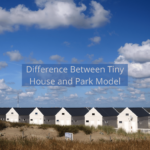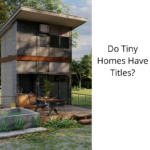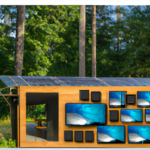Legalities and Zoning
Are Tiny Homes Legal in the US?
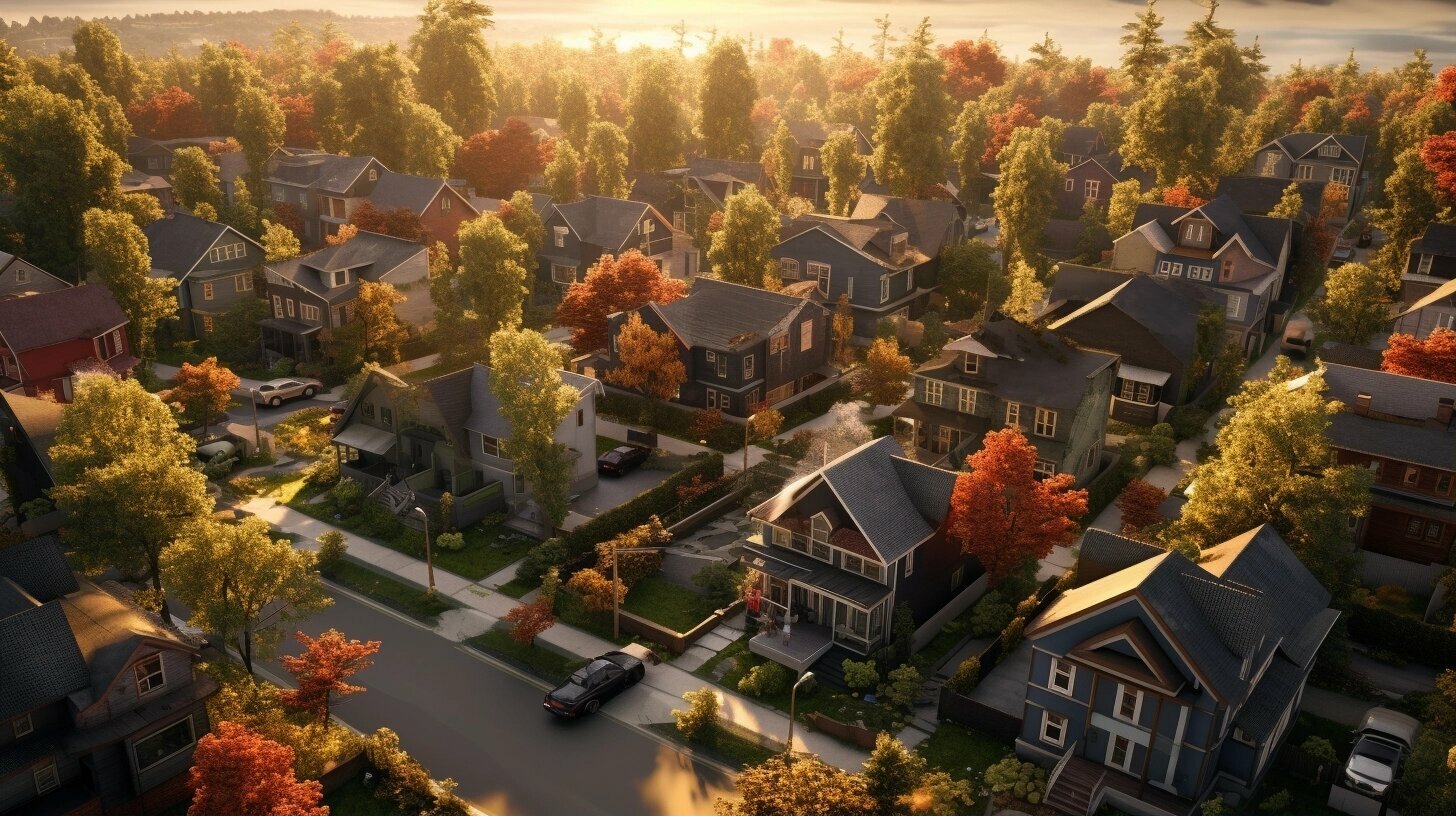
There is a growing interest in tiny homes, with many people curious about their legal status in the United States. These homes, defined as dwellings under 400 square feet, offer a unique living option that challenges traditional zoning laws and building codes. This article explores the current legal landscape of tiny homes in the US, discussing the challenges and opportunities for those interested in this lifestyle.
Understanding the Definition of Tiny Homes
At their core, tiny homes are small dwellings that typically range from 100 to 400 square feet in size. They are designed to be more affordable and environmentally sustainable living options, and can come in a variety of styles, from traditional cottages to sleek modern designs.
While the size of tiny homes varies, they often prioritize functionality and minimalism over excess. They are built with creative storage solutions and multi-functional spaces, such as a living room that doubles as a bedroom or a dining area that can also serve as a workspace.
Despite their small size, tiny homes can still offer many of the amenities of larger homes, such as a full kitchen, bathroom, and even outdoor living spaces. Additionally, they can often be mobile, allowing homeowners to travel with their homes or move to different locations as needed.
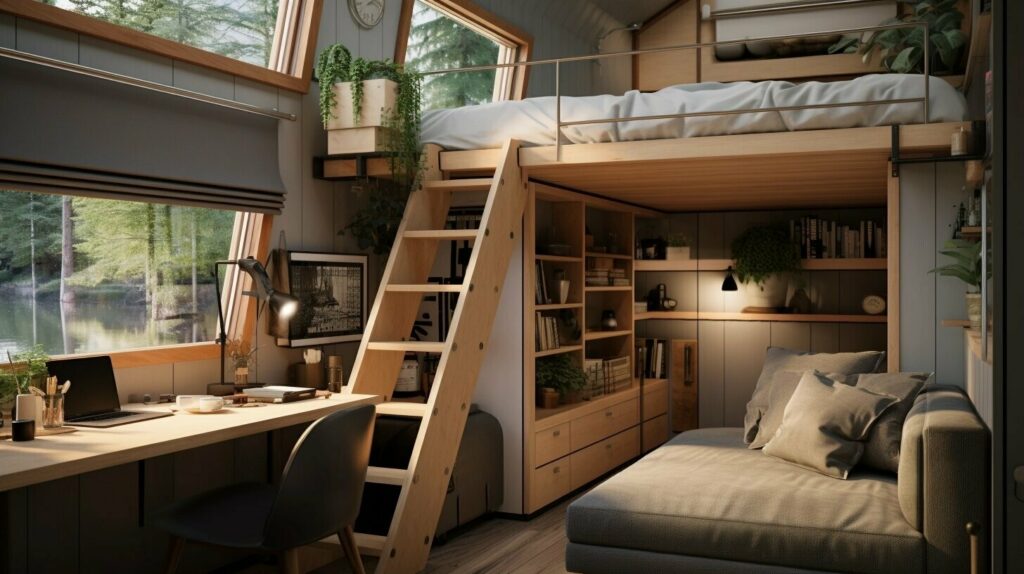
A tiny home is not just a home, it’s a lifestyle. It forces you to be more mindful of how you live and what you consume.” Emma – tinyhouse43.com
Tiny homes have gained popularity in recent years, particularly among those seeking to simplify their lives and minimize their environmental impact. However, their legal status remains a point of contention in many parts of the United States, with zoning laws and building codes often creating barriers to their development and use.
Building Codes and Zoning Laws
One of the major challenges facing the legality of tiny homes is building codes and zoning laws. These regulations tend to vary based on location, making it difficult for tiny home owners to navigate the legal landscape.
Building codes are standards that specify the minimum requirements for construction, materials, safety, and other aspects of building homes. Zoning laws, on the other hand, regulate land use to ensure that certain types of structures or activities are only allowed in specific areas.
When it comes to tiny homes, some building codes and zoning laws can be restrictive, especially in areas where traditional single-family homes are the norm. For example, some codes specify minimum square footage requirements and minimum ceiling heights, which may be impossible to meet in a tiny home. Additionally, some zoning laws prohibit living in a house on wheels, which can make it difficult for tiny homes on wheels to be parked and inhabited legally.
Example of Building Code Requirements:Impact on Tiny Homes: Minimum square footage for a dwelling unit May not be able to meet this requirement in a tiny home Minimum ceiling height for living spaces May not be able to meet this requirement in a tiny home Requirement for permanent foundation May not be able to meet this requirement in a tiny home on wheels
It is important for tiny home owners to research the building codes and zoning laws in their area and work with local officials or seek legal advice to ensure compliance. In some cases, advocates have successfully lobbied for changes in these regulations to accommodate tiny homes.
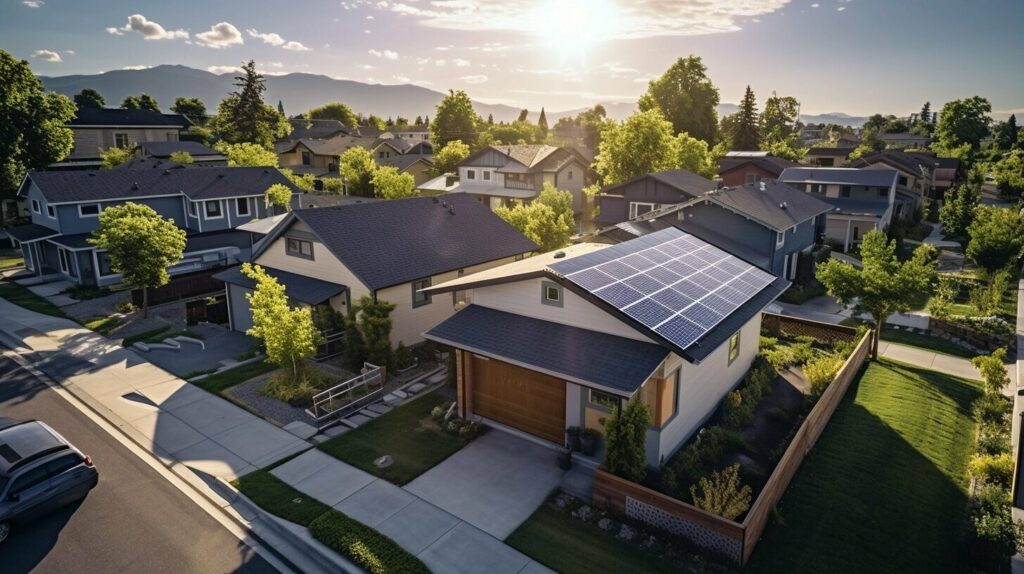
State Regulations on Tiny Homes
When it comes to tiny homes, regulations and requirements can vary widely from state to state. While some states have embraced the tiny home movement and have put in place specific regulations to accommodate them, others have made it difficult for tiny home enthusiasts to legally own and live in these dwellings.
For example, in Colorado, tiny homes are allowed as long as they are built on a foundation and meet certain size requirements. In Texas, on the other hand, there is no state law specifically addressing tiny homes, leaving it up to individual cities and counties to regulate them. Some cities, such as Spur, Texas, have welcomed tiny homes and are actively promoting their growth, while others, such as San Antonio, have strict zoning laws that make it nearly impossible to legally own a tiny home.
| State | Regulations on Tiny Homes |
|---|---|
| California | Allows tiny homes in some areas, with varying requirements. |
| Florida | No state law specifically addressing tiny homes, leaving it up to local jurisdictions to regulate them. |
| Georgia | Allows tiny homes as accessory dwelling units in some areas. |
| Massachusetts | No state law specifically addressing tiny homes, leaving it up to local zoning boards to determine their legality. |
| Oregon | Allows tiny homes on wheels as long as they meet certain requirements. |
| Tennessee | Allows tiny homes as long as they are built on a foundation and meet certain size requirements. |
It’s important for those interested in owning a tiny home to research the specific regulations in their state and local jurisdiction before investing in a tiny home. Failing to do so could result in legal issues and financial losses.
State Regulations on Tiny Homes Case Study: Oregon
Oregon is one state that has been particularly welcoming to the tiny home movement. In 2018, the state passed House Bill 2737, which allows tiny homes on wheels to be considered as ADUs (accessory dwelling units) and can be placed on the property of a single-family home as a secondary dwelling unit. The law also sets out specific requirements for tiny homes on wheels, such as maximum size limits and electrical and plumbing standards.
Thanks to this law, tiny home communities have sprung up around the state, providing an affordable housing option for those who might not otherwise be able to afford a traditional home.

In conclusion, while there is no one-size-fits-all approach to tiny home regulations, it’s clear that the movement is gaining steam across the US. As more states and cities recognize the benefits of tiny homes and work to create regulations that accommodate them, it’s likely that even more people will turn to tiny homes as a housing solution.
Challenges in Categorizing Tiny Homes
The classification of tiny homes under existing housing regulations and standards is a significant challenge due to the unique characteristics of these small dwellings. One of the primary issues is that tiny homes straddle multiple categories and don’t fit neatly into existing building and zoning codes, making it tough to determine the regulatory requirements they need to meet. As a result, tiny home builders and owners often encounter legal hurdles when trying to navigate the labyrinth of regulations.
For instance:
“In some states, tiny homes are classified as RVs and can be parked in campgrounds and RV parks. In other states, they are classified as accessory dwelling units, which limits their use as permanent residences.” Emma – tinyhouse43.com
This lack of consistency in classification makes it challenging for homeowners to secure financing and insurance for their tiny homes, as well as for tiny home communities to gain approval from local zoning boards.
Another issue is that tiny homes on wheels may not meet building codes for permanent structures, which limits their ability to be used as full-time residences. In some areas, building codes require tiny homes to be built on a foundation and adhere to the same codes as traditional homes, which can significantly increase the cost of construction.
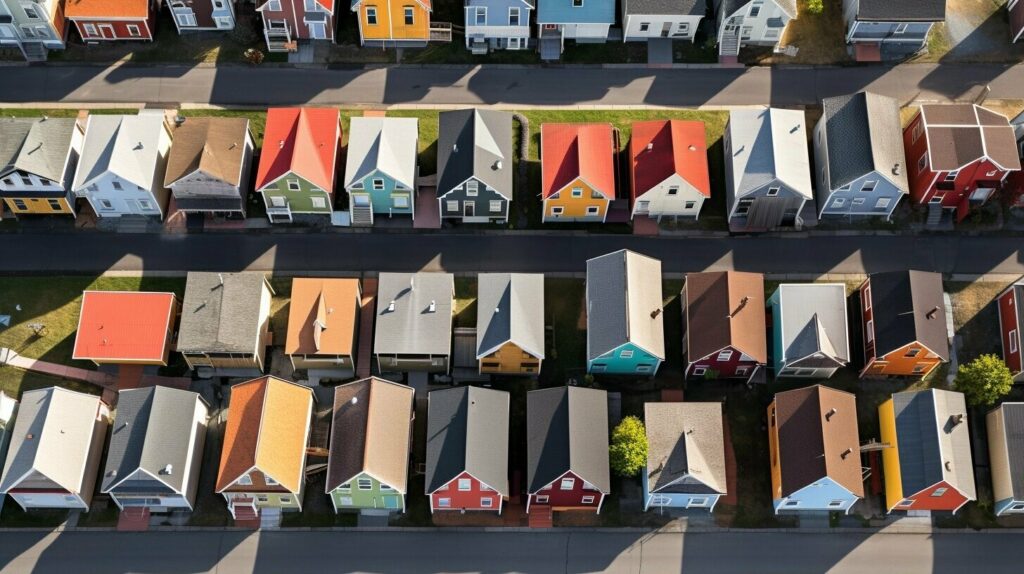
Despite these legal challenges, the tiny home movement continues to grow, with advocates pushing for more comprehensive regulations to support this innovative and sustainable style of living.
Tiny Home Communities and Development
With the growing interest in tiny homes, more and more people are considering the benefits of creating tiny home communities. These communities offer a unique living experience that promotes minimalism, sustainability, and a sense of community. In addition, tiny home communities often provide affordable housing solutions for those who may not be able to afford traditional homes.
However, creating tiny home communities can be a legal challenge. Zoning laws, building codes, and other regulations can all impact the ability to establish these communities. To navigate these challenges, it’s important to understand the legal considerations that go into creating a tiny home community.
Zoning and Building Codes for Tiny Home Communities
Zoning laws are one of the biggest challenges facing tiny home communities, as many areas do not allow for homes smaller than a certain square footage. Additionally, building codes can vary from state to state, which can make it difficult to create a community that meets all of the necessary requirements.
Despite these challenges, there are some solutions for creating legal tiny home communities. One option is to work with local officials to create zoning regulations specifically for tiny homes. Another option is to establish the community as an RV park or campground, which often have more lenient zoning and building code requirements.
Financing and Insurance for Tiny Home Communities
Financing and insuring a tiny home community can also be a challenge. Many traditional lenders may not be familiar with the concept of tiny homes, which can make it difficult to secure funding. Additionally, insurance providers may view tiny homes as a higher risk and charge higher premiums.
However, there are options for financing and insuring tiny home communities. One option is to work with lenders and insurers who specialize in tiny homes. Additionally, creating a homeowners association (HOA) can help to spread the risk and make it easier to secure financing and insurance for the community.
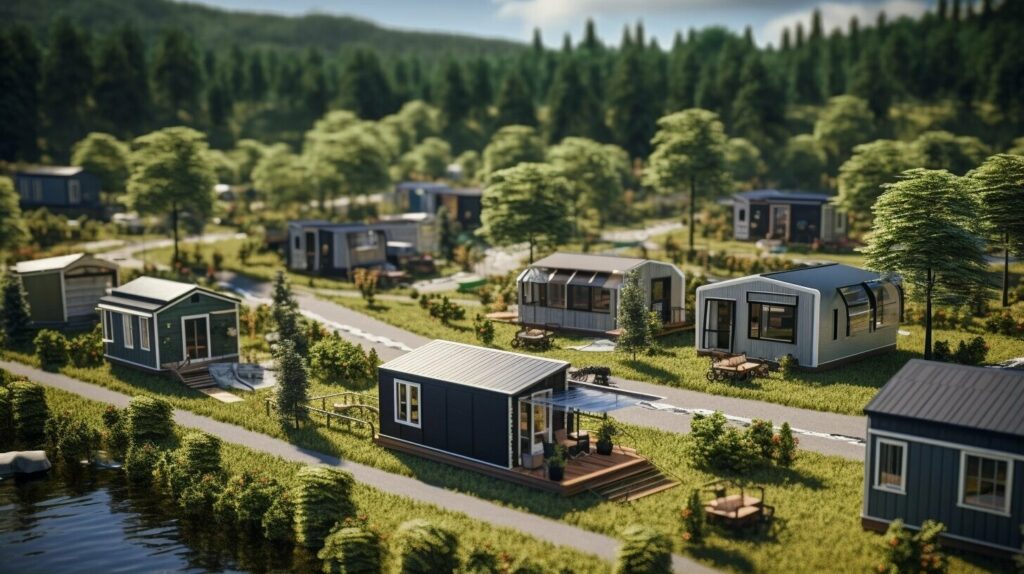
Overall, creating a legal tiny home community requires careful planning, a deep understanding of local regulations, and a willingness to work with local officials and experts. However, with the right approach, it is possible to create a thriving community that offers a unique and sustainable living experience.
Financing and Insuring Tiny Homes
One of the major challenges for those interested in owning a tiny home is financing and insurance. Traditional lenders and insurance companies may be hesitant to provide services for tiny homes due to their unique nature and potential legal issues.
Financing:
One option for financing a tiny home is through personal loans or lines of credit. However, interest rates may be higher than for traditional home loans due to the perceived higher risk involved. Another option is to work with lenders who specialize in tiny homes, such as Tiny Home Financing or LightStream. These lenders understand the unique needs of tiny home buyers and can offer more customized solutions.
Insurance:
Obtaining insurance for a tiny home can also be a challenge. Most traditional homeowners insurance policies do not cover tiny homes, leaving owners to seek out specialized insurance providers. Companies such as American Modern and RV Advantage offer coverage plans specifically designed for tiny homes and other non-traditional dwellings. Additionally, some tiny home builders may offer insurance as part of their building services.

In both cases, it’s important for tiny home owners to do their research and carefully consider their options before committing to any financing or insurance plan. Working with professionals who have experience in the tiny home industry can help ensure a smoother and more successful process.
Environmental and Sustainable Benefits of Tiny Homes
Living in a tiny home has several advantages, including its positive environmental impact. Tiny homes use fewer resources, generate less waste, and consume less energy compared to traditional homes. These factors are important in contributing to a sustainable way of living.
One of the primary benefits of tiny homes is their energy efficiency. Smaller living spaces require less energy to heat or cool, which results in lower utility bills and less environmental pollution. Additionally, many tiny home designs feature sustainable materials and energy-efficient appliances, further reducing their environmental impact.
Tiny homes also promote a minimalist lifestyle, which encourages individuals to reduce their consumption and waste. By limiting the amount of space available, tiny houses discourage excessive buying and hoarding of unnecessary items.
Beyond the benefits to individuals and the environment, tiny homes also have the potential to address larger social and economic issues. For example, the use of tiny homes for affordable housing initiatives could help alleviate the housing affordability crisis in many cities.
The Potential for Sustainable Living
The sustainable lifestyle promoted by tiny homes is not limited to just energy conservation and waste reduction. Tiny homes offer a unique opportunity to live a self-sufficient lifestyle with the potential for off-grid living. Many tiny homeowners choose to install solar panels and other renewable energy sources, allowing them to produce their own energy and minimize their reliance on traditional energy sources.
Additionally, the limited space available in a tiny home encourages resourcefulness and creativity in designing living spaces. The use of multi-purpose furniture and efficient storage solutions is common in tiny homes, which can inspire individuals to adopt similar practices in their own lives.
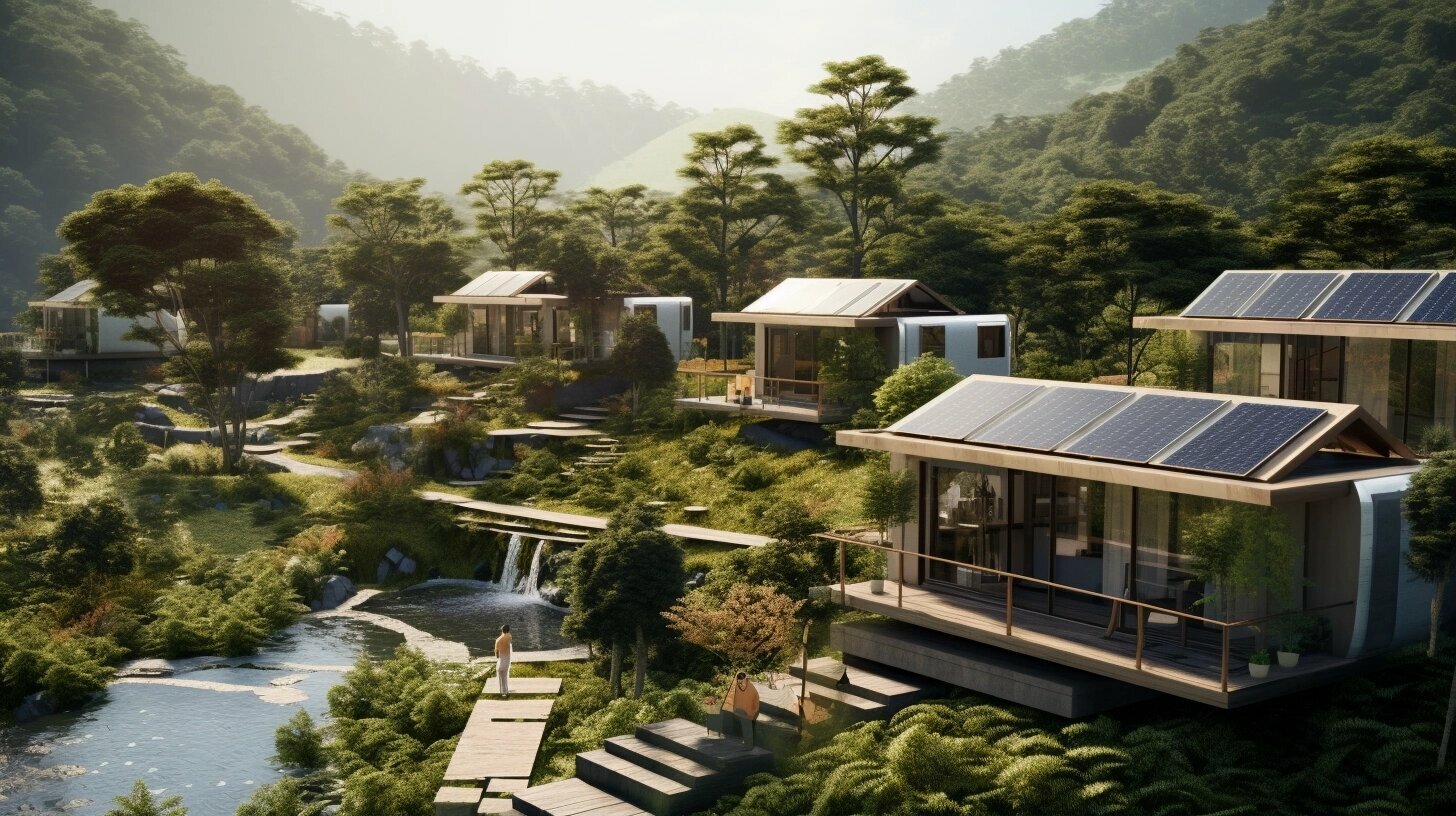
Overall, tiny homes offer numerous environmental and sustainable benefits that make them an appealing alternative to traditional homes. As more individuals become aware of these benefits, the demand for tiny homes is likely to continue to grow.
Legalizing Tiny Homes: Advocacy and Policy Changes
The tiny house movement has sparked a growing interest in alternative housing options, and as a result, advocacy groups have emerged to push for policy changes. These groups aim to increase the legal recognition and acceptance of tiny homes as a viable housing option in the US.
One such organization is the American Tiny House Association (ATHA), which was founded in 2015 to promote the tiny house movement and advocate for legal changes. ATHA works with local and state governments to develop zoning and building codes that recognize tiny homes as a legitimate form of housing.
Another group is the Tiny Home Industry Association (THIA), which was established to represent the interests of the tiny home industry. THIA lobbies for changes in building codes, zoning laws, and financing policies to support the growth of the industry and increase access to tiny homes.
Policy changes have been enacted in some states to allow for the legal recognition of tiny homes. For example, California passed legislation in 2016 that allowed for the construction of accessory dwelling units (ADUs), which can include tiny homes. In 2018, Oregon passed a similar law that permits the construction of tiny homes as ADUs. These changes are seen as a positive step towards the wider acceptance of tiny homes as a legitimate housing option.
However, there is still much work to be done in terms of advocating for policy changes that would allow for the widespread legalization of tiny homes across the US. The legal framework surrounding housing is complex and can vary significantly from state to state, making it difficult to implement consistent regulations for tiny homes.

In addition, some lawmakers and zoning officials may be resistant to change, seeing tiny homes as a potential threat to property values and community standards. As a result, advocacy groups must work to educate policymakers and the public about the benefits of tiny homes and dispel the myths and misconceptions that exist around this housing option.
The Role of Architects in Legalizing Tiny Homes
Architects also play a crucial role in advocating for the legalization of tiny homes. Many architects are exploring innovative design solutions for tiny homes that meet building codes and safety standards while also maximizing livable space.
By designing homes that are both functional and aesthetically pleasing, architects are helping to change the perception of tiny homes as substandard housing options.
Architects are also working to develop model building codes and zoning regulations for tiny homes that can be adopted by local and state governments. These regulations would provide consistent guidelines for the construction and placement of tiny homes, making it easier for homeowners and builders to navigate the legal framework surrounding housing.
Legalizing tiny homes is an ongoing process, but with the support of advocacy groups, architects, and policymakers, the future looks bright for this alternative housing option.
Case Studies of Legal Tiny Home Projects
While the legal status of tiny homes varies across the US, there are a number of successful projects that have been recognized by local authorities and zoning boards. These projects can serve as models for future developments and provide inspiration for those interested in the tiny home lifestyle.
Quixote Village, Olympia, WA
Quixote Village is a tiny home community in Olympia, WA that provides permanent housing for the formerly homeless. The community was established as a result of a partnership between Panza, a local nonprofit, and the city of Olympia.
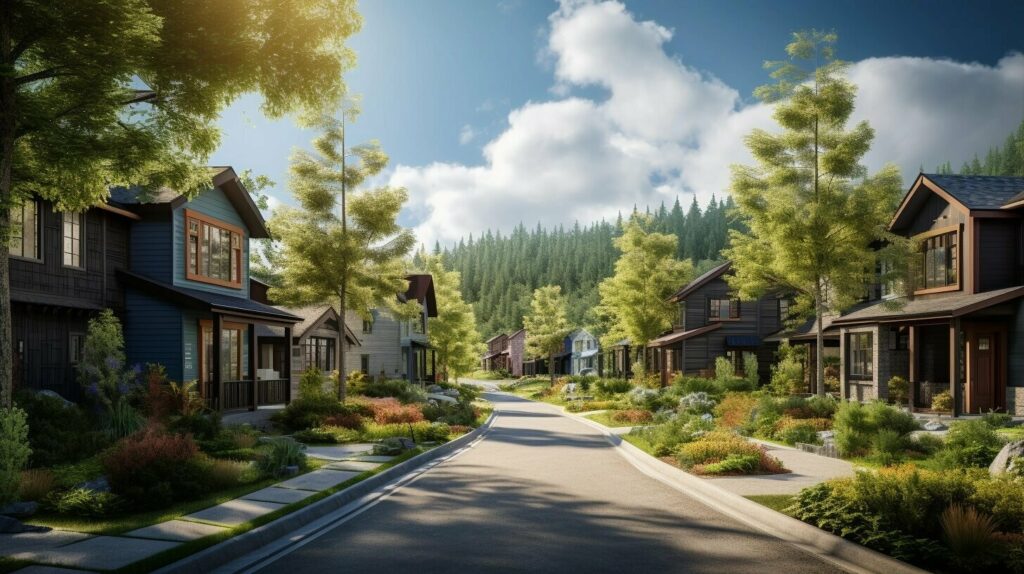
The tiny homes are built on a permanent foundation and are considered accessory dwelling units (ADUs) under local zoning laws. Residents pay rent and have access to a variety of supportive services, including case management and counseling.
Boneyard Studios, Washington D.C.
Boneyard Studios is a tiny home community in Washington D.C. that was founded by Brian Levy and Lee Pera. The community consists of three tiny homes and is located on a vacant lot in the city’s Stronghold neighborhood.
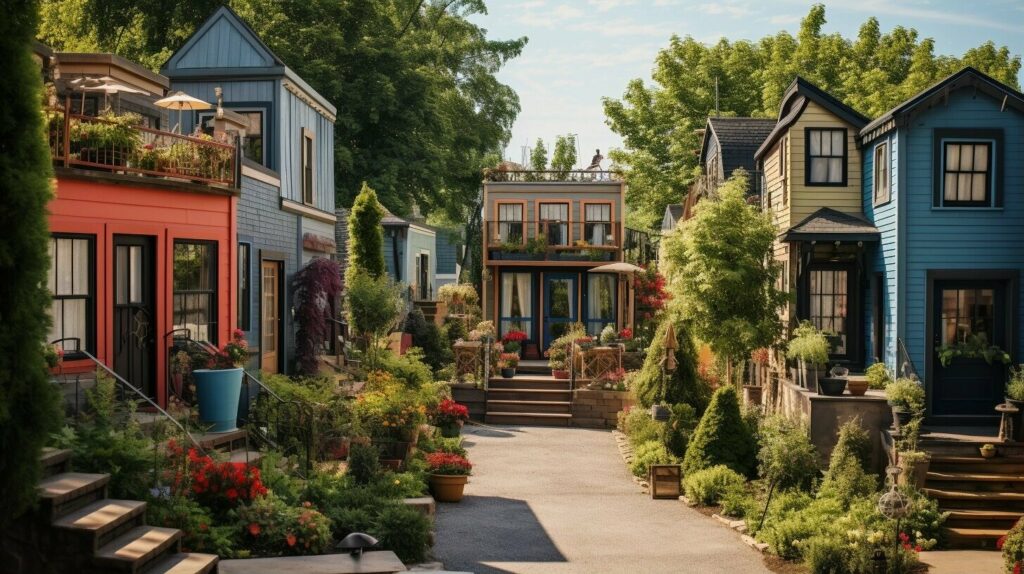
The homes are built on wheels and are considered recreational vehicles (RVs) under D.C. law. In order to comply with zoning laws, Boneyard Studios is classified as a temporary land use and is subject to periodic inspections by the city.
The Tiny House Project, Detroit, MI
The Tiny House Project is a partnership between Cass Community Social Services and the city of Detroit. The project provides affordable housing for low-income individuals and families. The homes are built on a permanent foundation and are considered ADUs under local zoning laws.
Cass Community Social Services also provides a range of supportive services for residents, including job training and financial counseling.
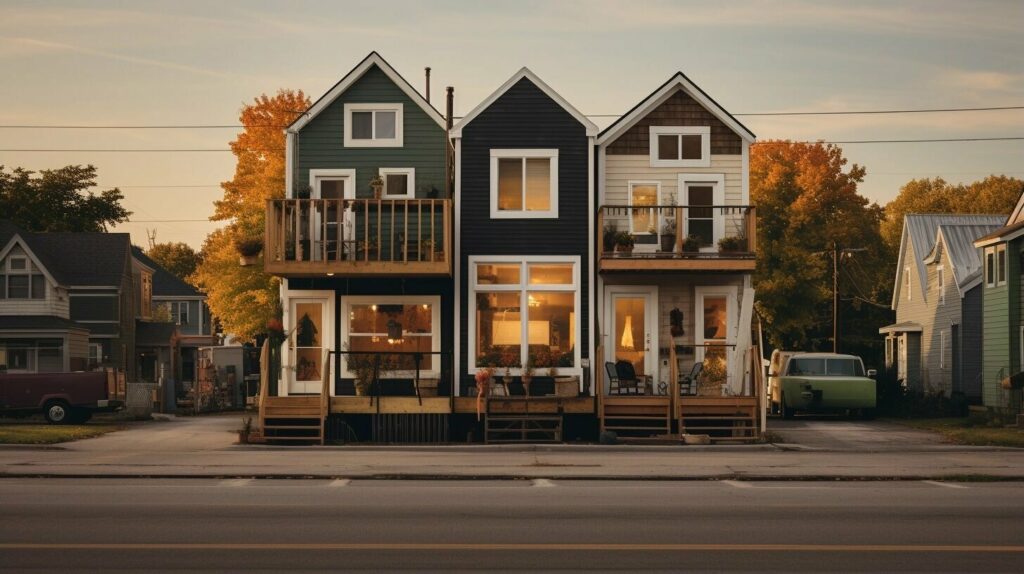
These and other successful examples of legally recognized tiny home projects demonstrate the potential for tiny homes to provide affordable and sustainable housing solutions for a range of individuals and communities.
Benefits and Drawbacks of Tiny Home Living
Living in a tiny home can have numerous benefits, including reduced living expenses, a smaller environmental impact, and the opportunity for a simpler, more minimalist lifestyle. However, there are also some drawbacks to tiny home living that should be considered.
Benefits
Affordability: One of the most significant benefits of tiny homes is their affordability. With a significantly lower cost to build and maintain, tiny homes can offer a more affordable housing option for those struggling to make ends meet. Additionally, with lower expenses, tiny homeowners are more likely to be debt-free, which can lead to a more freeing financial situation.
Reduced Environmental Impact: Tiny homes are often designed to be highly energy-efficient, reducing environmental impact by conserving resources such as water and electricity. Many tiny homes are also built using sustainable materials and with considerations for the environment in mind.
Minimalist Lifestyle: Living in a tiny home can encourage a minimalist lifestyle, as there is not enough space to accumulate excessive possessions. This can lead to a simpler, more focused lifestyle with less clutter and distractions.
Space Limitations: Perhaps the most significant drawback of tiny homes is the limited space. For those accustomed to a more significant living area, adjusting to a tiny home can be challenging. There is less space for storage, entertaining, and living in general.
Zoning and Building Code Restrictions: As previously mentioned, tiny homes can face legal hurdles due to zoning and building code restrictions. These restrictions can make it challenging to find a suitable location for a tiny home, or to even build one altogether in some areas.
Resale Value: While tiny homes may be more affordable to build, they may not hold their value as well as traditional homes. With a limited market for tiny homes and fewer potential buyers, resale may be difficult, and homeowners may not see a return on their investment if they sell. Overall, while tiny homes offer numerous benefits, it is essential to consider the drawbacks before committing to a tiny home lifestyle.
Tiny homes are built on a smaller scale than traditional homes, but that does not mean they are exempt from building codes and safety standards. In fact, many states have specialized building codes specifically for tiny homes. When constructing a tiny home, it is important to be familiar with the building codes and safety standards that apply in your location.
These codes and standards may vary depending on the size of the home and the materials used for construction. In general, tiny homes must meet the same safety standards as traditional homes. This includes requirements for electrical wiring, plumbing, and fire safety.
For example, the National Fire Protection Association (NFPA) has created a set of guidelines for tiny houses on wheels that include requirements for smoke detectors, carbon monoxide detectors, and fire extinguishers. It is also important to consider the environmental factors that can impact the safety of a tiny home. For example, tiny homes built in areas prone to earthquakes must be designed and constructed to withstand seismic activity.
Similarly, tiny homes built in areas with high winds may require special reinforcements to prevent damage from strong gusts. Overall, it is essential for individuals building or purchasing a tiny home to be familiar with the building codes and safety standards in their location. Ensuring compliance with these standards not only promotes safety but also helps to ensure legal compliance. It depends on the zoning laws and building codes in your area. Some areas may not allow tiny homes to be used as a primary residences, while others may have specific regulations in place for them. It is important to research local laws and regulations before deciding to live in a tiny home full-time.
Yes, in most cases, a building permit is required for the construction of a tiny home. The permit process will vary depending on your location and the specific details of your project. Be sure to check with local building departments to determine the requirements in your area.
Yes, there are size limitations for tiny homes based on building codes and zoning laws in different areas. Generally, tiny homes are under 500 square feet, but some areas may have specific requirements for size and design. It is important to research local regulations before building a tiny home.
No, in most cases, you cannot park your tiny home anywhere you please. Zoning laws and building codes typically require that tiny homes be parked in designated areas, such as RV parks or tiny home communities. Research local regulations before parking your tiny home.
Getting insurance for a tiny home can be challenging, as many insurance providers do not offer coverage for non-traditional homes. However, there are options available, such as specialty tiny home insurance policies or adding your tiny home to a personal umbrella policy. Research insurance providers and policies to determine the best option for your situation.
While tiny homes provide a unique and affordable living option for many people, it is important to understand the legal considerations and potential challenges involved. Researching local regulations and seeking legal and financial advice can help ensure a successful and legal experience with tiny home living.
I’m Theodore, and I love tiny houses. In fact, I’m the author of Tiny House 43, a book about tiny houses that are also tree houses. I think they’re magical places where imaginations can run wild and adventures are just waiting to happen. While tree houses are often associated with childhood, they can be the perfect adult retreat. They offer a cozy space to relax and unwind, surrounded by nature. And since they’re typically built on stilts or raised platforms, they offer stunning views that traditional homes simply can’t match. If you’re looking for a unique and romantic getaway, a tree house tiny house might just be the perfect option.Drawbacks
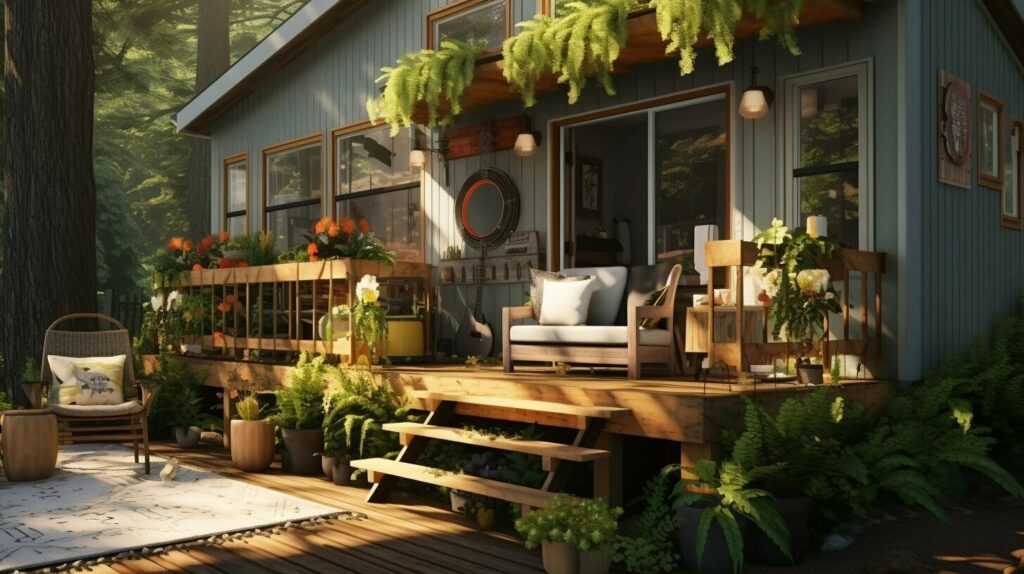
Building Codes and Safety Standards for Tiny Homes
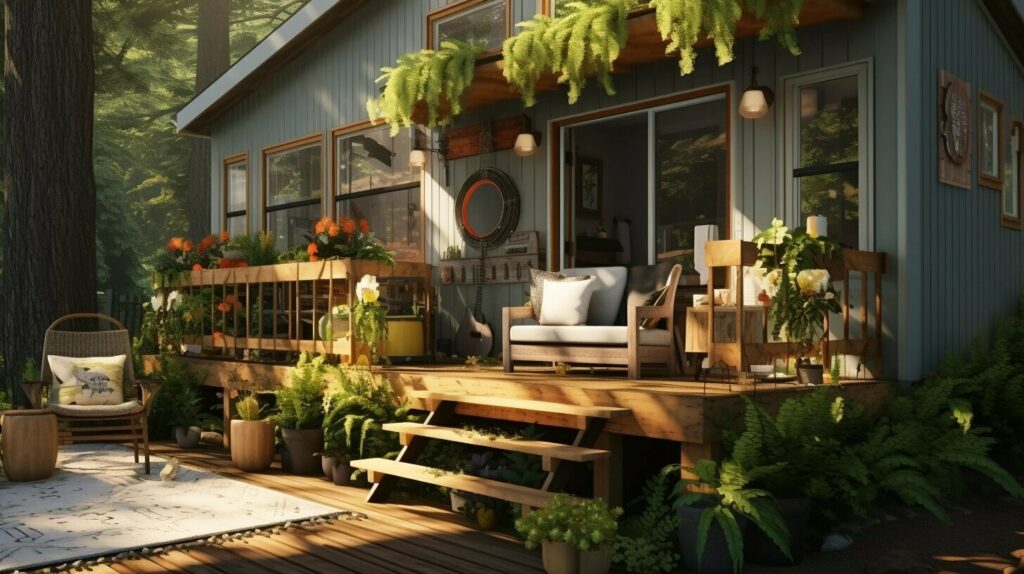
Frequently Asked Questions (FAQs)
Are tiny homes legal to live in full-time?
Do I need a permit to build a tiny home on my property?
Are there size limitations for tiny homes?
Can I park my tiny home anywhere?
How do I insure my tiny home?
Conclusion
Legalities and Zoning
Buy Land To Put A Tiny House On What Do I Need To Do
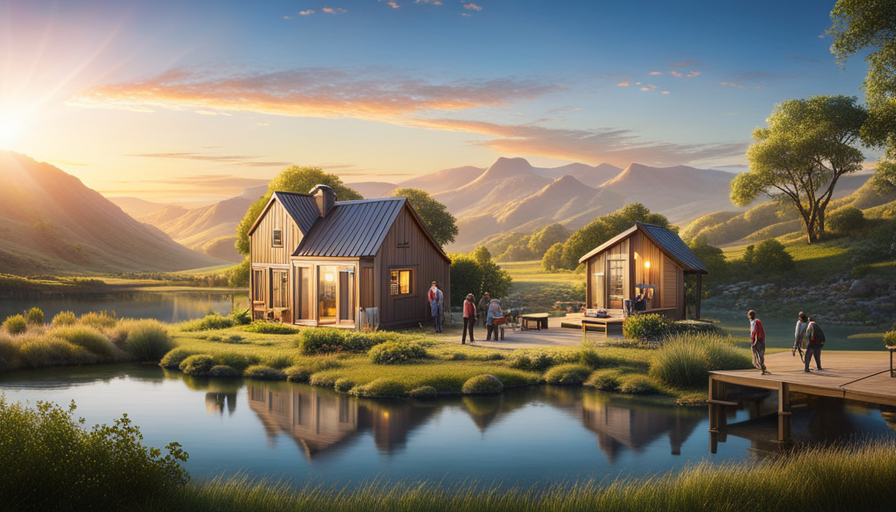
Are you prepared to embrace the tiny living lifestyle? Just a heads up, it’s not as simple as you may believe. Finding a piece of land for your tiny home requires careful planning, thorough research, and a wealth of knowledge. But don’t worry, I’m here to guide you through the process.
In this article, I’ll walk you through all the steps you need to take to make your tiny house dreams a reality. From determining your budget and financing options to navigating the complex world of zoning and building regulations, I’ll share my expert advice on how to find the perfect piece of land for your tiny abode.
But wait, there’s more! I’ll also guide you through the process of designing and constructing your tiny house, ensuring it meets all local regulations and maximizing space and functionality. Whether you’re a DIY enthusiast or prefer to hire professionals, I’ll provide you with all the information you need to make the right choices.
So, buckle up and get ready for the adventure of a lifetime. Your tiny house awaits!
Key Takeaways
- Determine budget and financing options
- Research zoning and building regulations in desired location
- Find suitable land through a real estate agent or online listings
- Secure necessary permits and approvals for building and living in a tiny house
Determine your budget and financing options
Figure out how much money you can allocate and explore various financing choices when it comes to buying land for your tiny house.
Determining financing options is crucial in ensuring you make a wise investment. Start by assessing your budget and determining how much you can afford to spend on land. Consider your savings, loans, or even crowdfunding as possible sources of financing.
Additionally, exploring cost-effective alternatives such as owner financing or lease-to-own arrangements can help make buying land more affordable. Research different lenders, compare interest rates, and evaluate loan terms to find the best financing option for your needs.
Once you have determined your budget and financing options, it’s important to research zoning and building regulations in your desired location. This will help you understand any restrictions or requirements you need to comply with when building your tiny house.
Research zoning and building regulations in your desired location
Researching zoning and building regulations in your desired location is essential before you embark on your quest to find the perfect spot for your dream tiny home. It’s important to understand the challenges and legal considerations that come with building a tiny house on a piece of land.
Here are four key things to consider when researching zoning and building regulations:
- Zoning restrictions: Different areas have different zoning regulations that dictate where and how you can build a tiny house. Some areas may have specific zones designated for tiny homes, while others may have restrictions on minimum square footage or require a permanent foundation.
- Building codes: Familiarize yourself with the building codes in your desired location. These codes outline the minimum standards for construction and safety, including requirements for plumbing, electrical systems, and structural integrity.
- Permits and approvals: Determine what permits and approvals are required to build a tiny house. This may include obtaining a building permit, septic system approval, or compliance with environmental regulations.
- Setbacks and utilities: Research setback requirements, which dictate how far your tiny house must be from property lines or existing structures. Additionally, consider access to utilities such as water, electricity, and sewage.
By thoroughly researching zoning and building regulations, you’ll be well-prepared to navigate the challenges and legal considerations associated with building a tiny house on your desired land. Next, let’s explore how to find a real estate agent or browse listings online to find suitable land.
Find a real estate agent or browse listings online to find suitable land
To successfully locate your dream tiny home spot, it’s time to connect with a real estate agent who specializes in unique properties or start perusing online listings.
Working with a real estate agent has several benefits when it comes to finding land for your tiny house. They have extensive knowledge of the local market and can provide valuable insights into zoning regulations and building restrictions in your desired location. Additionally, real estate agents often have access to listings that may not be available to the general public, giving you a wider range of options to choose from.
On the other hand, browsing online listings offers its own advantages. It allows you to conveniently explore different areas and compare prices without the need for face-to-face meetings.
With the help of a real estate agent or by searching online, you can find suitable land that meets your needs and preferences.
Now, let’s consider the size and layout of your tiny house and ensure it meets local regulations.
Consider the size and layout of your tiny house and ensure it meets local regulations
Now that you’ve found potential spots for your dream tiny home, it’s important to consider the size and layout of your cozy abode and make sure it complies with local regulations. When it comes to tiny house design, every inch counts. You need to carefully plan the layout to maximize space and functionality. Consider factors like ceiling height, storage options, and multi-purpose furniture. Additionally, local regulations play a crucial role in determining the size and features of your tiny house. Some areas may have minimum square footage requirements or limitations on the number of bedrooms. It’s essential to research and understand these regulations before finalizing your design. By ensuring your tiny house meets local regulations, you can avoid costly setbacks or potential legal issues. Now, let’s move on to the next step and conduct a thorough land survey and inspection before purchasing.
Conduct a thorough land survey and inspection before purchasing
Before you make any decisions, it’s crucial to thoroughly inspect the land you’re considering and conduct a comprehensive survey to ensure it meets your needs and requirements.
A land survey will help you determine the boundaries, topography, and any potential issues that may affect your tiny house placement.
Additionally, an inspection of the land will reveal any environmental concerns, such as soil quality or drainage problems, that could impact your budget and financing options.
By conducting these assessments, you can avoid costly surprises down the line and make an informed decision about purchasing the land.
Once you have completed the land survey and inspection, you can move on to the next step of securing all necessary permits and approvals for building and living in a tiny house, ensuring a smooth transition into the next phase of your project.
Secure all necessary permits and approvals for building and living in a tiny house
Once you’ve jumped through all the necessary hoops, getting the permits and approvals for your dream tiny home will feel like reaching the peak of a mountain after a grueling climb. The permit process can vary depending on your location, so it’s essential to research and understand the requirements specific to your area. In some cases, you may need to obtain multiple permits, such as a building permit, zoning permit, and septic permit. Additionally, if you plan to live in a tiny house community, you may need to adhere to specific community guidelines and obtain approval from the community association. To help you visualize the permit process, here’s a table outlining some common permits and their purposes:
Permit Purpose Building Permit Ensures your tiny house meets building codes and safety standards Zoning Permit Verifies that your land is zoned for residential use Septic Permit Confirms that your sewage system meets health and environmental regulations
With the necessary permits and approvals in hand, you can move forward and install necessary utilities such as water, electricity, and sewage systems.
Install necessary utilities such as water, electricity, and sewage systems
To fully equip your dream tiny home, you’ll want to ensure the installation of essential utilities like water, electricity, and sewage systems.
When it comes to water system installation, you have a few options. You can connect to a municipal water supply if available, or you can install a well on your property. If you choose the latter, it’s important to check local regulations and obtain any necessary permits.
Additionally, consider incorporating sustainable energy sources into your tiny house. Solar panels can provide electricity, while rainwater collection systems can supply water for non-potable uses. These eco-friendly solutions not only reduce your environmental impact but also offer long-term cost savings.
Now that you have your utilities in place, let’s move on to the exciting task of planning and designing your tiny house to maximize space and functionality.
[Transition sentence]: With the utilities sorted, it’s time to focus on designing a space-efficient and functional tiny house.
Plan and design your tiny house to maximize space and functionality
Now that you’ve installed the necessary utilities, it’s time to focus on planning and designing your tiny house. This step is crucial in maximizing storage and optimizing the layout to create a functional and comfortable living space.
As a professional in the field, I can assure you that careful consideration of every inch is essential. Start by envisioning how you want your tiny house to look and feel. Think about your lifestyle and prioritize your needs.
Consider using clever storage solutions such as built-in shelves, hidden compartments, and multi-functional furniture. Don’t be afraid to get creative with your design to make the most of the limited space. Remember, every decision you make should contribute to a seamless and efficient flow within your tiny house.
Now, let’s move on to the next section about hiring professional help or DIY construction depending on your skills and resources.
Hire professional help or DIY construction depending on your skills and resources
Deciding whether to hire professional help or tackle the construction yourself depends on your skills and resources. Hiring professionals can save you time and ensure that the construction is done correctly. They have the expertise and experience to handle any challenges that may arise during the building process. However, it can be costly to hire professionals, and it may limit your ability to customize your tiny house exactly how you want it.
On the other hand, DIY construction allows you to have full control over the design and save money. It can be a rewarding experience, especially if you enjoy hands-on projects. Just keep in mind that it requires time, patience, and a certain level of construction skills. So, carefully consider your capabilities and resources before making a decision.
Once the construction is complete, you can enjoy your new tiny house and embrace the benefits of a minimalist lifestyle.
Enjoy your new tiny house and embrace the benefits of a minimalist lifestyle
Once you settle into your cozy new space, you’ll discover a world of freedom and tranquility that comes with embracing a minimalist lifestyle in your tiny home. Living in a smaller space offers numerous benefits of downsizing, such as reduced expenses, less clutter, and a smaller environmental footprint.
Here are some tips for organizing a small space to maximize its functionality and make the most of your minimalist lifestyle:
- Utilize vertical storage: Install shelves or use hanging organizers to maximize storage space.
- Multi-functional furniture: Invest in furniture that serves multiple purposes, such as a storage ottoman or a fold-out table.
- Declutter regularly: Keep your space tidy by regularly decluttering and getting rid of unnecessary items.
- Create zones: Divide your space into different zones for specific activities, such as a sleeping area, a workspace, and a relaxation area.
- Maximize natural light: Use sheer curtains or blinds to let in as much natural light as possible, making your space feel larger and more open.
Embracing a minimalist lifestyle in your tiny house allows you to simplify your life, reduce stress, and focus on the things that truly matter.
Frequently Asked Questions
How much does it cost to buy land for a tiny house?
The cost of buying land for a tiny house can vary greatly depending on location and size. For example, in a rural area, you may find a plot for $10,000-$50,000. Financing options include traditional mortgages or personal loans. Cost considerations include utilities and permits.
Are there any restrictions on where I can put my tiny house?
There are zoning restrictions and legal considerations when it comes to placing a tiny house. It’s important to research local regulations and building codes to ensure compliance and avoid any legal issues.
What are the common regulations for building a tiny house?
When building a tiny house, it’s important to be aware of common regulations. These can vary by location, but challenges in obtaining permits often include zoning restrictions, minimum square footage requirements, and utility connections.
How do I find available land for my tiny house?
To find land for my tiny house, I should research available properties through online real estate platforms or local listings. It’s essential to consider zoning laws to ensure the land is suitable for my tiny house.
Are there any specific requirements for utilities in a tiny house?
There are specific requirements for utilities in a tiny house, especially if you are considering off-grid living. It is important to plan and install systems for water, electricity, and waste management that are suitable for a tiny house.
Conclusion
In conclusion, buying land to put a tiny house on requires careful planning and consideration. By determining your budget and researching zoning regulations, you can make your dream a reality.
Conducting a thorough land survey and inspection, installing necessary utilities, and designing your tiny house to maximize space are essential steps in the process.
Whether you choose to hire professionals or take on the construction yourself, embracing a minimalist lifestyle in your new tiny house will bring you the freedom and simplicity you desire. As they say, “less is more,” and with a tiny house, you can truly experience the beauty of this idyllic phrase.
I’m Theodore, and I love tiny houses. In fact, I’m the author of Tiny House 43, a book about tiny houses that are also tree houses. I think they’re magical places where imaginations can run wild and adventures are just waiting to happen.
While tree houses are often associated with childhood, they can be the perfect adult retreat. They offer a cozy space to relax and unwind, surrounded by nature. And since they’re typically built on stilts or raised platforms, they offer stunning views that traditional homes simply can’t match.
If you’re looking for a unique and romantic getaway, a tree house tiny house might just be the perfect option.
Legalities and Zoning
Where Can I Buy A Tiny House In Florida

Have you ever dreamt of living a simpler and more affordable lifestyle? I have some exciting news for you. In the beautiful state of Florida, the tiny house movement is gaining popularity, offering a unique and environmentally friendly living option.
You might be wondering, ‘Where can I buy a tiny house in Florida?’ Look no further, as I have done the research for you. From the vibrant city of Miami to the charming streets of St. Augustine, Florida offers a variety of options for those seeking to downsize and embrace a minimalist lifestyle. Whether you desire the bustling city life or a serene coastal retreat, there is a tiny house waiting for you.
Join me as we explore the top destinations in Florida where you can find your perfect tiny home and embark on a new adventure filled with freedom and simplicity.
Key Takeaways
- Miami and Tampa are great places to buy a tiny house in Florida with favorable zoning regulations and a wide range of options.
- Orlando and St. Augustine also offer opportunities to buy a tiny house, with several communities and builders available.
- Florida’s tiny house movement promotes sustainable living, community, and a unique and affordable housing solution.
- St. Augustine, the oldest continuously inhabited city in the United States, offers a charming and historic setting with easy access to beaches and a thriving arts and culture scene.
Miami
You won’t believe the incredible tiny house options available in Miami! The city is home to several tiny house communities where you can find your dream tiny home.
These communities offer a unique lifestyle, with a strong sense of community and a focus on sustainable living.
One of the reasons why Miami is a great place to buy a tiny house is its favorable zoning regulations. The city has embraced the tiny house movement and has made it easier for people to live in these small, eco-friendly homes. Unlike some other cities, Miami allows tiny houses on wheels to be parked on private property, making it convenient for those who want the flexibility to move their home around.
In addition to the zoning regulations, Miami also offers a wide range of tiny house options to choose from. Whether you prefer a sleek and modern design or a cozy and rustic cabin, you can find it in Miami. Many tiny house builders in the area specialize in creating unique and custom homes that fit your specific needs and style.
Now, let’s head over to Tampa, where you’ll find even more exciting options for buying a tiny house.
Tampa
When it comes to Tampa, there are three key points that make it a must-visit destination. First, the city boasts a thriving arts and entertainment scene, with numerous theaters, galleries, and live music venues.
Second, Tampa is home to beautiful outdoor spaces, including stunning beaches, lush parks, and the famous Riverwalk.
Lastly, food lovers will be delighted by the delicious seafood and local cuisine that can be found throughout the city.
Overall, Tampa offers a diverse range of experiences that are sure to appeal to everyone, making it a great choice for a vacation or weekend getaway.
Discover the Thriving Arts and Entertainment Scene
Explore the vibrant arts and entertainment scene in Florida to immerse yourself in a world of creativity and inspiration. There’s no shortage of arts festivals in the state, where you can experience a diverse range of artistic expressions.
From the Gasparilla Festival of the Arts in Tampa to the Winter Park Sidewalk Art Festival, there’s something for every art lover.
Additionally, Florida boasts numerous live music venues that cater to various genres. Whether you prefer jazz, rock, or classical music, you can find a venue that suits your taste. Enjoy the dynamic performances and immerse yourself in the spirit of the music.
As you explore the thriving arts scene, don’t forget to transition into the subsequent section to discover the beautiful outdoor spaces that Florida has to offer.
Explore the Beautiful Outdoor Spaces
Immerse yourself in the breathtaking beauty of Florida’s outdoor spaces, where lush greenery, vibrant flowers, and crystal-clear waters create a picturesque paradise.
Florida offers a wide array of outdoor activities for nature enthusiasts of all ages. From exploring the Everglades National Park, with its unique ecosystem and diverse wildlife, to hiking through the scenic trails of Ocala National Forest, there is no shortage of natural attractions to explore.
For those who enjoy water sports, Florida’s coastline provides endless opportunities for swimming, snorkeling, kayaking, and fishing. Whether you prefer the tranquil beaches of the Gulf Coast or the energetic waves of the Atlantic Ocean, there is something for everyone.
As you venture through Florida’s outdoor spaces, take a moment to appreciate the stunning landscapes and vibrant ecosystems that make this state truly remarkable.
Now, let’s dive into the next topic and savor the delicious seafood and local cuisine that Florida has to offer.
Enjoy the Delicious Seafood and Local Cuisine
Indulge in the mouthwatering seafood and delectable local cuisine that will tantalize your taste buds and leave you craving for more. Florida is renowned for its fresh seafood, and there are plenty of opportunities to savor it throughout the state.
Seafood festivals are a popular way to experience the diverse flavors and culinary traditions of Florida. From the Apalachicola Seafood Festival to the Key West Seafood Festival, these events showcase the best catches from the surrounding waters.
If you prefer a more intimate dining experience, there are also numerous farm-to-table restaurants that specialize in using locally sourced ingredients to create delectable dishes. These establishments emphasize sustainability and support local farmers and fishermen.
Now, let’s head to Orlando and explore the vibrant attractions and entertainment options this city has to offer.
Orlando
Discover where you can snag a cozy tiny house in the vibrant city of Orlando, Florida. Orlando is home to several tiny house communities and builders that offer unique and affordable housing options. Here are some great places to check out:
- Lake Breeze RV Park: This community offers a variety of tiny houses for sale, ranging from rustic cabins to modern designs. With its lakeside location and proximity to Orlando’s attractions, it’s a perfect spot for nature lovers and adventure seekers.
- Orlando Lakefront: Situated on the shores of Lake Fairview, this community features tiny houses with stunning lake views. It also offers a range of amenities, including a community garden and a dock for boating and fishing.
- Green Key Village: Located just outside of Orlando in Lady Lake, this sustainable community offers energy-efficient tiny houses built by local builders. It’s a great option for those looking for an eco-friendly lifestyle.
- Orlando Tiny Homes: If you prefer to build your own tiny house, Orlando Tiny Homes offers customizable designs and construction services. They can help you create the perfect tiny home to suit your needs and style.
- Tiny House Siesta: While not located directly in Orlando, Tiny House Siesta in Sarasota is worth mentioning. It offers a unique experience with a variety of tiny houses available for rent, allowing you to test out the tiny house lifestyle before making a purchase.
Now let’s head to Destin, where more tiny house opportunities await.
Destin
Let’s explore the charming coastal town of Destin, where you can find a range of unique and affordable housing options. The picturesque beaches and crystal-clear waters make Destin an ideal location for those seeking a peaceful and serene living environment. If you’re interested in the tiny house movement, Destin offers a thriving tiny house community with various options to choose from.
To give you a better idea of what to expect, here’s a table showcasing three popular tiny house builders in Destin:
Builder Location Price Range Tiny Homes of Florida Destin $50,000 – $100,000 Florida Tiny House Builders Destin $60,000 – $120,000 Emerald Coast Tiny Homes Destin $70,000 – $150,000
These builders specialize in creating custom tiny homes that are both functional and aesthetically pleasing. Each builder offers different floor plans and design options to suit your needs and preferences.
Now, let’s move on to Key West, where you can find even more exciting opportunities for tiny house living.
Key West
After exploring the possibilities of buying a tiny house in Destin, Florida, I couldn’t help but be drawn to the vibrant and eclectic atmosphere of Key West. Known for its laid-back lifestyle and stunning sunsets, Key West offers a unique experience for those interested in tiny house living.
When it comes to tiny house rentals, Key West has a variety of options to choose from. You can find charming cottages tucked away in lush gardens or modern tiny homes with all the amenities you need for a comfortable stay. Whether you’re looking for a weekend getaway or a long-term stay, there’s a tiny house rental in Key West that will suit your needs.
If you’re interested in becoming part of a tiny house community, Key West also has options for that. You can join a community of like-minded individuals who value simplicity and sustainability. Living in a tiny house community allows you to share resources, build connections, and support each other in your tiny house journey.
Transitioning to our next destination, St. Augustine, you’ll find even more opportunities for tiny house living.
St. Augustine
If you’re seeking a charming and historic coastal town with a unique allure, look no further than St. Augustine in the Sunshine State. St. Augustine is a hidden gem in northeast Florida, known for its rich history, stunning architecture, and beautiful beaches. It’s the perfect place to settle down and immerse yourself in the laid-back Florida lifestyle, all while enjoying the benefits of living in a tiny house.
Here are five reasons why St. Augustine is a great place to buy a tiny house:
- Tiny House Communities: St. Augustine is home to several tiny house communities, where like-minded individuals can come together and embrace the simplicity of tiny living. These communities offer a sense of community and support, making it easy to connect with others who share your lifestyle.
- Historic Charm: St. Augustine is the oldest continuously inhabited city in the United States, and its historic charm is evident everywhere you look. From the cobblestone streets to the Spanish colonial architecture, living in a tiny house in St. Augustine allows you to be a part of this rich history.
- Zoning Regulations: St. Augustine has zoning regulations in place that allow for tiny houses on wheels or on a foundation. This means you can find a place to park your tiny house and call it home, without worrying about legal issues.
- Beaches and Nature: St. Augustine is surrounded by natural beauty, with pristine beaches just a short drive away. Living in a tiny house allows you to fully immerse yourself in the coastal lifestyle, with easy access to outdoor activities like fishing, boating, and hiking.
- Vibrant Culture: St. Augustine is a vibrant and diverse community, with a thriving arts and culture scene. From art galleries to live music venues, there’s always something happening in St. Augustine. Living in a tiny house allows you to be a part of this vibrant culture and embrace the unique spirit of the town.
St. Augustine is a wonderful place to buy a tiny house in Florida. With its historic charm, tiny house communities, favorable zoning regulations, beautiful beaches, and vibrant culture, it offers a truly unique and fulfilling lifestyle. So why wait? Start your tiny house adventure in St. Augustine today!
Frequently Asked Questions
Are there any restrictions or regulations on owning a tiny house in Florida?
Yes, there are regulations and building codes in Florida for tiny houses. It’s important to research and comply with the legal requirements to ensure a smooth and hassle-free experience when owning a tiny house in Florida.
How much does a typical tiny house cost in Florida?
A typical tiny house in Florida can cost anywhere from $30,000 to $100,000, depending on factors such as size, materials, and amenities. There are various financing options available to help make owning a tiny house more affordable. Popular designs include modern, rustic, and minimalist styles.
Can I finance or get a mortgage for a tiny house in Florida?
Yes, you can finance a tiny house in Florida through various financing options available. Mortgage requirements for tiny houses may differ from traditional homes, so it’s important to research and understand the specific criteria.
Are there any communities or neighborhoods specifically designed for tiny houses in Florida?
There are several tiny house communities in Florida that offer a unique and affordable living experience. Living in a tiny house community has many benefits, such as a sense of community, shared resources, and a simpler lifestyle.
What are the zoning laws for parking a tiny house in Florida?
Parking a tiny house in Florida is subject to zoning laws and parking regulations. It’s important to research and comply with local ordinances. Understanding these laws will ensure a hassle-free experience and help you find the perfect spot for your tiny house.
Conclusion
In conclusion, Florida offers several great locations to buy a tiny house. Some of these locations include Miami, Tampa, Orlando, Destin, Key West, and St. Augustine. These cities provide diverse landscapes, from vibrant urban areas to picturesque coastal towns.
One interesting statistic to consider is that the demand for tiny houses in Florida has increased by 67% in the past year alone. This statistic highlights the growing popularity and appeal of tiny living, evoking a sense of excitement and possibility in the audience.
Whether you’re looking for a vacation home or a permanent residence, Florida has something for everyone in the tiny house market.
I’m Theodore, and I love tiny houses. In fact, I’m the author of Tiny House 43, a book about tiny houses that are also tree houses. I think they’re magical places where imaginations can run wild and adventures are just waiting to happen.
While tree houses are often associated with childhood, they can be the perfect adult retreat. They offer a cozy space to relax and unwind, surrounded by nature. And since they’re typically built on stilts or raised platforms, they offer stunning views that traditional homes simply can’t match.
If you’re looking for a unique and romantic getaway, a tree house tiny house might just be the perfect option.
Legalities and Zoning
Where Can I Build A Tiny House
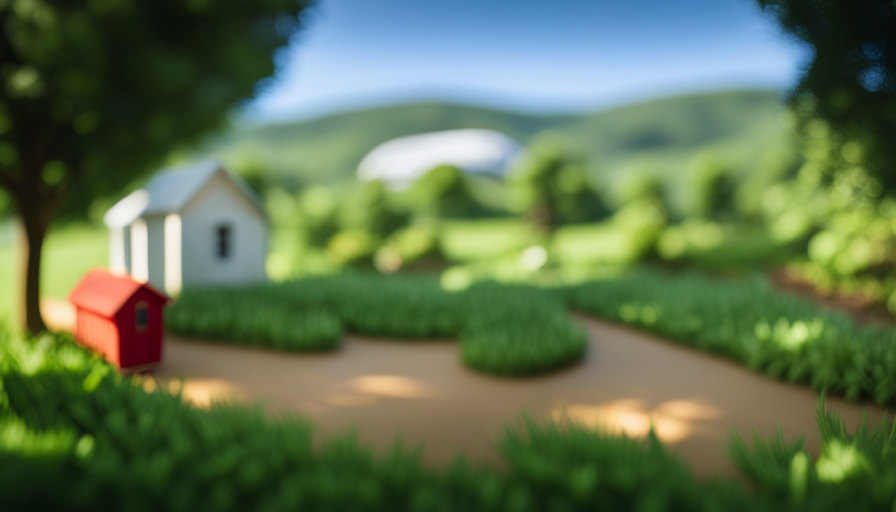
Congratulations on choosing to build a small house! You are embarking on an exciting journey that will provide you with a cozy and sustainable home, while also giving you the freedom to live life on your terms.
Now, the big question is: where can you build your tiny house? Thankfully, there are numerous options available to you.
Rural areas and farmland offer vast open spaces where you can set up your tiny abode.
Tiny house communities provide a sense of community and support, while backyard placements allow you to stay close to family and friends.
RV parks and campgrounds offer the opportunity to travel and explore different locations.
Vacation rental properties can be a great temporary solution, and co-living spaces provide a unique way to share resources and experiences.
If you’re feeling adventurous, converted shipping containers and mobile tiny homes might be the perfect fit for you.
And for those seeking a more cohesive community, custom-built tiny house villages are becoming increasingly popular.
With so many options available, the possibilities are endless for building your dream tiny house. Let’s dive in and explore the world of tiny house living together.
Key Takeaways
- There are numerous options available for building a tiny house, including rural areas, farmland, tiny house communities, and backyard placements.
- Researching regulations and zoning laws is crucial before choosing a location for a tiny house.
- Utilizing existing infrastructure and utilities can save time, money, and provide access to essential services.
- Custom-built tiny house villages and intentional, eco-friendly communities offer shared resources, amenities, and a sense of community for sustainable living.
Rural Areas and Farmland
If you’re looking to build a tiny house, rural areas and farmland are the perfect places for you! These locations offer a unique opportunity for a rural retreat, where you can escape the hustle and bustle of city life and enjoy the peacefulness of nature.
Rural areas often have lower land prices, making it more affordable to purchase a plot of land to build your tiny house. Additionally, farmland provides ample space for you to design and construct your dream tiny home.
One of the advantages of building a tiny house in a rural area is the access to agricultural opportunities. You can grow your own fruits and vegetables, raise livestock, or even start a small-scale farm. This not only provides you with a sustainable source of food but also allows you to embrace a self-sufficient lifestyle. Imagine waking up to the sound of birds chirping, breathing in the fresh country air, and tending to your own garden or animals.
Transitioning into the subsequent section about tiny house communities, if you’re not quite ready to go completely off-grid, there are also thriving tiny house communities in rural areas. These communities offer a sense of belonging and camaraderie, as you get to connect with like-minded individuals who share a passion for tiny living.
Tiny House Communities
When it comes to tiny house living, one of the most appealing aspects is the ability to connect with like-minded individuals. Tiny house communities offer a unique opportunity to meet and socialize with others who share a similar lifestyle and values.
In addition, these communities often provide access to shared resources and amenities, such as communal gardens, laundry facilities, and recreational spaces. This can greatly enhance the quality of life for tiny house dwellers, creating a sense of community and making it easier to live sustainably.
Connect with Like-Minded Individuals
Explore the vast online community of tiny house enthusiasts and connect with like-minded individuals who can guide you on where to build your dream tiny house. By joining tiny house meetups and forums, you can tap into a wealth of knowledge and experience from people who’ve already gone through the process of finding the perfect location.
These individuals can provide valuable insights and recommendations based on their own journeys. They can share information about zoning regulations, available land, and the best areas to consider for your tiny house project. Additionally, connecting with like-minded individuals can also help you build a supportive network of friends who are passionate about tiny living. This community can offer advice, encouragement, and even potential opportunities for collaboration.
By connecting with others who share your vision, you can gain the support and resources you need to make your tiny house dreams a reality.
Now, let’s delve into how you can access shared resources and amenities for your tiny house.
Access Shared Resources and Amenities
To truly embrace the benefits of tiny living, you can tap into a network of shared resources and amenities. For example, there may be a bustling neighborhood marketplace where you can easily borrow a cup of sugar or trade your homegrown vegetables for freshly baked bread. This creates a sense of community and interconnectedness that is reminiscent of a small town where everyone looks out for each other.
In addition to this sense of community, shared workspaces are becoming increasingly popular among tiny house dwellers. These co-op living arrangements provide a dedicated space for remote work or creative pursuits, allowing individuals to collaborate and share ideas with like-minded individuals.
By accessing shared resources and amenities, tiny house owners can enhance their quality of life and make the most of their compact living spaces.
Transitioning into the next section about backyard placements, let’s explore the various options available for those looking to settle their tiny homes in a more private setting.
Backyard Placements
In a cozy backyard, you could create an enchanting space for your tiny house. However, before embarking on this exciting project, it is essential to familiarize yourself with backyard regulations and zoning laws in your area. These regulations vary from one jurisdiction to another, and they dictate whether you can build a tiny house in your backyard and what restrictions may apply.
To help you understand the potential requirements and limitations, here is a table outlining some common backyard regulations and zoning laws in different areas:
City Maximum Size (sq. ft) Setbacks (ft) Utilities Required Parking Requirements Seattle 800 5 Yes Yes Austin 400 10 No No Portland 600 8 Yes Yes Los Angeles 500 6 Yes No Denver 700 7 Yes Yes
Understanding these regulations will ensure that you comply with local laws and avoid any potential fines or legal issues. Once you have a good grasp of the backyard regulations in your area, you can explore other options for placing your tiny house, such as RV parks and campgrounds. These locations often offer amenities and services that make them a desirable choice for tiny house living.
Now, let’s delve into the next section about RV parks and campgrounds.
RV Parks and Campgrounds
When considering where to park a tiny house, RV parks and campgrounds offer several advantages. Firstly, these locations often have existing infrastructure and utilities in place, making it easier to hook up water, electricity, and sewage. This can save time and money compared to setting up these systems from scratch.
Additionally, staying in an RV park or campground allows you to immerse yourself in a community of travelers, providing opportunities to meet new people, share experiences, and learn from others who are also living a nomadic lifestyle.
Benefit from Existing Infrastructure and Utilities
By tapping into the existing infrastructure and utilities, you’ll unlock a world of possibilities for your tiny house dreams. Building your tiny house in an area that already has infrastructure in place can save you time, money, and headaches. Here are four benefits of utilizing existing infrastructure and utilities:
- Access to water and sewage systems: Building in an area with these utilities already available means you won’t have to worry about installing your own water well or septic system.
- Electricity connections: Many areas already have electricity lines running through them, making it easy to connect your tiny house and have reliable power.
- Internet and phone access: Living in a community with existing infrastructure means you can easily get connected and stay connected with the outside world.
- Road access: Building in an area with established roads means you won’t have to worry about creating your own access point.
By benefiting from existing infrastructure and utilities, you can seamlessly integrate your tiny house into a community of travelers who share your passion for exploration and adventure.
Immerse Yourself in a Community of Travelers
Surrounded by fellow adventurers, your tiny home becomes a hub of connection and camaraderie in a community of like-minded travelers. It’s an opportunity to connect with fellow nomads and build a network of tiny house enthusiasts. Imagine sitting around a communal fire pit, swapping stories of your travels and sharing tips and tricks for living in a small space. This vibrant community offers a sense of belonging and support that is hard to find elsewhere. To give you a visual representation of this immersive experience, imagine a 2 column and 5 row table. In the left column, you have a diverse group of individuals from different backgrounds, all living in their unique tiny homes. In the right column, there are vibrant discussions, laughter, and a strong sense of community. This interaction fosters a deep connection with others who share your passion for tiny living. As you settle into this community, you’ll find yourself eager to explore other opportunities, such as vacation rental properties.
Vacation Rental Properties
Looking for the perfect getaway? Discover vacation rental properties where you can build your dream tiny house and create unforgettable memories. Vacation rental properties offer a unique and exciting opportunity to immerse yourself in a community of like-minded travelers, while also providing the freedom and flexibility to design and build your own tiny house.
Here are three reasons why vacation rental properties are the ideal choice for building your tiny house:
- Flexibility: Vacation rental properties offer a range of options, from sprawling countryside estates to cozy beachfront cottages. This means you can choose the location that best suits your needs and preferences for building a tiny house.
- Community: Many vacation rental properties are located in co-living spaces, where you can connect with other travelers who share your passion for tiny house living. These communities often organize events and activities, providing the opportunity to learn from and collaborate with fellow enthusiasts.
- Infrastructure: Vacation rental properties are equipped with essential amenities such as electricity, water, and waste management systems. This makes it easier to design and build your tiny house without worrying about the practicalities of off-grid living.
Looking for a tiny house location that offers the best of both worlds? Urban areas and city centers provide a vibrant and dynamic backdrop for your tiny house adventure.
Urban Areas and City Centers
Want to experience the excitement and energy of city living while enjoying the benefits of a compact and customizable home? Urban areas and city centers can be great locations to build a tiny house. However, it is important to consider urban planning and housing regulations before embarking on your tiny house adventure.
Urban planning plays a significant role in determining where you can build a tiny house in a city. Some cities have designated areas for small dwellings, while others have strict regulations that may make it challenging to find suitable locations. It is crucial to research and understand the zoning laws and building codes of the specific city you are interested in. This will help you identify areas where tiny houses are permitted and ensure compliance with local regulations.
To give you an idea of potential urban locations, here is a table showcasing cities known for their tiny house-friendly atmosphere:
City Zoning Laws Building Codes Tiny House Communities Portland Flexible Favorable Yes Seattle Progressive Supportive Yes Austin Accommodating Forward-thinking Yes San Francisco Evolving Innovative Yes
These cities have embraced the tiny house movement, making them attractive options for urban tiny house living. However, it is essential to conduct thorough research and consult local authorities to ensure compliance with any specific regulations.
Transitioning to the next section about co-living spaces, it’s worth exploring alternative options for urban tiny house enthusiasts.
Co-living Spaces
Co-living spaces are a great option for those who want to share living spaces and expenses with others. These spaces provide a sense of community and collaboration, allowing individuals to connect with like-minded people and foster meaningful relationships.
In addition, co-living spaces often offer shared amenities and common areas, creating opportunities for collaboration and interaction among residents.
Share Living Spaces and Expenses with Others
When sharing living spaces and expenses with others, it’s important to establish clear communication and boundaries to avoid any potential conflicts.
For example, my friend Sarah and I decided to split the cost of a tiny house and create a shared living arrangement that allows us to save money and support each other’s goals.
Share living spaces and communal living provide an opportunity for individuals to live together and share resources, fostering a sense of community and collaboration.
This arrangement not only helps to reduce living costs but also promotes a more sustainable lifestyle by sharing resources such as water, electricity, and even household chores.
By living in a community, we can also learn from each other, share experiences, and create a supportive network.
Together, we can foster a sense of community and collaboration in our shared living space, making it a truly enriching experience.
Foster a Sense of Community and Collaboration
When considering where to build a tiny house, it’s important to take into account building regulations and zoning restrictions. These regulations vary from place to place and can greatly impact your ability to build a tiny house. Some areas have strict regulations that prohibit the construction of tiny houses, while others have more lenient rules.
It’s crucial to thoroughly research the local building codes and zoning laws before deciding on a location. Additionally, it may be beneficial to connect with other tiny house enthusiasts in the area, as they can provide valuable insights and advice on navigating these regulations. By fostering a sense of community and collaboration, individuals can work together to find suitable locations for building their tiny houses.
Now, let’s explore another option for building a tiny house: converted shipping containers.
Converted Shipping Containers
If you’re looking to create a unique and eco-friendly living space, why not consider transforming a shipping container into your tiny house? Converted shipping containers have become increasingly popular as an alternative housing option, offering a range of benefits. Here are four reasons why they’re a great choice for custom-built tiny house villages:
- Sustainability: By repurposing shipping containers, you’re giving them a new lease of life, reducing waste, and minimizing the carbon footprint associated with traditional construction methods.
- Affordability: Compared to building a traditional house from scratch, converting a shipping container can be a cost-effective option. The structure is already in place, so the focus is on customization and interior design.
- Mobility: Shipping containers are designed to be transported, making them ideal for creating mobile tiny house villages. You can easily relocate your tiny house if needed, allowing you to explore new places or move closer to loved ones.
- Flexibility: With a shipping container, you have a blank canvas to design your dream tiny house. You can choose the layout, add windows and doors, and incorporate sustainable features like solar panels or rainwater harvesting systems.
When considering different options for your tiny house, it’s important to explore all possibilities.
In the next section, we’ll discuss the benefits of mobile tiny homes and how they can provide you with even more flexibility.
Mobile Tiny Homes
Mobile tiny homes, also known as tiny houses on wheels, offer the freedom to travel and explore new places, with over 10,000 individuals in the United States currently living in one. These alternative housing options have gained popularity in recent years due to their affordability, sustainability, and flexibility.
Mobile tiny homes are typically built on a trailer chassis, making them easy to transport and set up in different locations. They are designed to maximize space and include all the necessary amenities for comfortable living, such as a kitchen, bathroom, and sleeping area.
One of the advantages of mobile tiny homes is the ability to live off-grid. Many of these homes are equipped with solar panels, rainwater collection systems, and composting toilets, allowing homeowners to minimize their environmental impact and reduce utility costs. Additionally, mobile tiny homes can be customized to fit individual needs and preferences. Whether you prefer a minimalist design or a cozy cabin aesthetic, there are countless options available.
As the popularity of mobile tiny homes continues to rise, so does the demand for places to park and live in them. This has led to the development of custom-built tiny house villages, where like-minded individuals can come together and create a sense of community. These villages often provide shared resources and amenities, such as communal gardens, laundry facilities, and common areas. By joining a tiny house village, individuals can enjoy the benefits of mobile tiny homes while also fostering connections with their neighbors and embracing a simpler way of life.
Custom-Built Tiny House Villages
When it comes to building a custom-built tiny house village, you have the opportunity to create a community that is tailored to your needs. Whether it’s designing the layout, choosing the amenities, or establishing the rules and regulations, you have the freedom to make decisions that reflect your vision of an ideal living environment.
Moreover, collaborating with others in the process allows for a collective effort in designing and developing a sustainable living environment that fosters a sense of community and promotes eco-friendly practices.
Create a Community Tailored to Your Needs
Consider creating a community tailored specifically to your needs, where you can build and live in your tiny house. Creating intentional, eco-friendly communities is a growing trend that allows individuals to embrace minimalistic living while fostering a sense of belonging and support. These communities prioritize sustainability, self-sufficiency, and shared resources, making them an ideal choice for those seeking a simpler lifestyle. By collaborating with like-minded individuals, you can design and develop a sustainable living environment that meets your unique needs and values. Emphasizing the importance of community, these intentional communities often feature shared spaces, such as gardens, workshops, and communal areas, fostering a sense of connection and cooperation. By joining forces with others, you can not only create a space that aligns with your vision but also contribute to a larger movement towards sustainable living. Transitioning into the subsequent section, collaborating with others is a crucial step in designing and developing a sustainable living environment.
Collaborate with Others to Design and Develop a Sustainable Living Environment
To create a sustainable living environment, you can collaborate with others who share your vision and values, working together to design and develop a community that promotes eco-friendly practices and fosters a sense of connection and cooperation. For example, imagine partnering with a group of like-minded individuals to transform an abandoned industrial site into a thriving sustainable community. This community would include shared gardens, renewable energy systems, and a co-op grocery store.
Incorporate sustainable building materials: Utilize materials such as reclaimed wood, recycled metal, and natural fibers to minimize environmental impact and promote resource conservation.
Embrace off-grid living: Implement solar panels, rainwater harvesting systems, and composting toilets to reduce reliance on traditional utilities and minimize carbon footprint.
Foster a sense of community: Design common spaces that encourage interaction, such as community gardens, shared kitchens, and communal areas for workshops and gatherings.
Promote education and awareness: Offer workshops and seminars on sustainable living practices, host community events centered around environmental issues, and encourage ongoing learning and dialogue.
By collaborating with others and incorporating sustainable building materials and off-grid living practices, you can create a community that not only promotes eco-consciousness but also fosters a sense of connection and cooperation among its residents.
Frequently Asked Questions
Can I legally build a tiny house on vacant rural land?
Yes, you can legally build a tiny house on vacant rural land. However, it’s important to check local regulations and obtain the necessary tiny house building permits. Additionally, consider joining tiny house communities for support and guidance.
What are the zoning regulations for tiny houses in urban areas?
Exploring alternative housing options in urban areas reveals the intricate web of zoning regulations for tiny houses. These regulations aim to balance the impact of tiny houses on urban neighborhoods while accommodating sustainable living solutions.
Are there any restrictions on living in a tiny house in a backyard placement?
There may be backyard placement restrictions and tiny house living restrictions in residential areas. It is important to research and understand local zoning regulations and building codes before considering living in a tiny house in a backyard.
Is it possible to rent a tiny house in a vacation rental property for a weekend getaway?
Yes, it is possible to rent a tiny house for a weekend getaway. Many vacation rental properties offer tiny houses, perfect for a family reunion or a cozy retreat. Additionally, there are tiny house communities for long term stays.
Are there any specific requirements for parking a mobile tiny home in an RV park or campground?
You may be surprised to learn that there are over 1,000 mobile home parks in the US that allow tiny homes. However, parking regulations for tiny homes in residential neighborhoods vary, so it’s best to check local ordinances.
Conclusion
After extensive research, I’ve discovered numerous options for building a tiny house. From rural areas and farmland to tiny house communities, there are plenty of places to call home.
One interesting option is converted shipping containers, which offer a unique and sustainable living space. I came across a story of a couple who transformed an old shipping container into a cozy and eco-friendly tiny house. This anecdote serves as a metaphor for the endless possibilities and creative solutions that can be found when building a tiny house.
So, whether you choose a rural setting or a custom-built village, the choice is yours to make your tiny house dreams a reality.
I’m Theodore, and I love tiny houses. In fact, I’m the author of Tiny House 43, a book about tiny houses that are also tree houses. I think they’re magical places where imaginations can run wild and adventures are just waiting to happen.
While tree houses are often associated with childhood, they can be the perfect adult retreat. They offer a cozy space to relax and unwind, surrounded by nature. And since they’re typically built on stilts or raised platforms, they offer stunning views that traditional homes simply can’t match.
If you’re looking for a unique and romantic getaway, a tree house tiny house might just be the perfect option.
-

 Beginners Guides3 months ago
Beginners Guides3 months agoHow To Buy A Tesla Tiny House
-

 Energy Efficiency3 weeks ago
Energy Efficiency3 weeks agoBest Tiny Homes For Cold Climates
-

 Beginners Guides3 months ago
Beginners Guides3 months agoTiny House Nation Where Are They Now Stephanie
-

 Tiny House Resources (e.g., legalities, cost, insurance, FAQs)1 month ago
Tiny House Resources (e.g., legalities, cost, insurance, FAQs)1 month agoDo Tiny Homes Need Planning Permission?
-

 Beginners Guides3 months ago
Beginners Guides3 months agoFrom The Show Tiny House Nation How Many Keep Their Tiny House?
-

 Beginners Guides1 month ago
Beginners Guides1 month agoUsing a Climbing Net For Treehouse Construction
-

 Beginners Guides1 month ago
Beginners Guides1 month agoHow to Build a Treehouse Without Drilling Into the Tree
-

 Beginners Guides1 month ago
Beginners Guides1 month agoHow to Build a Treehouse Rope Bridge





